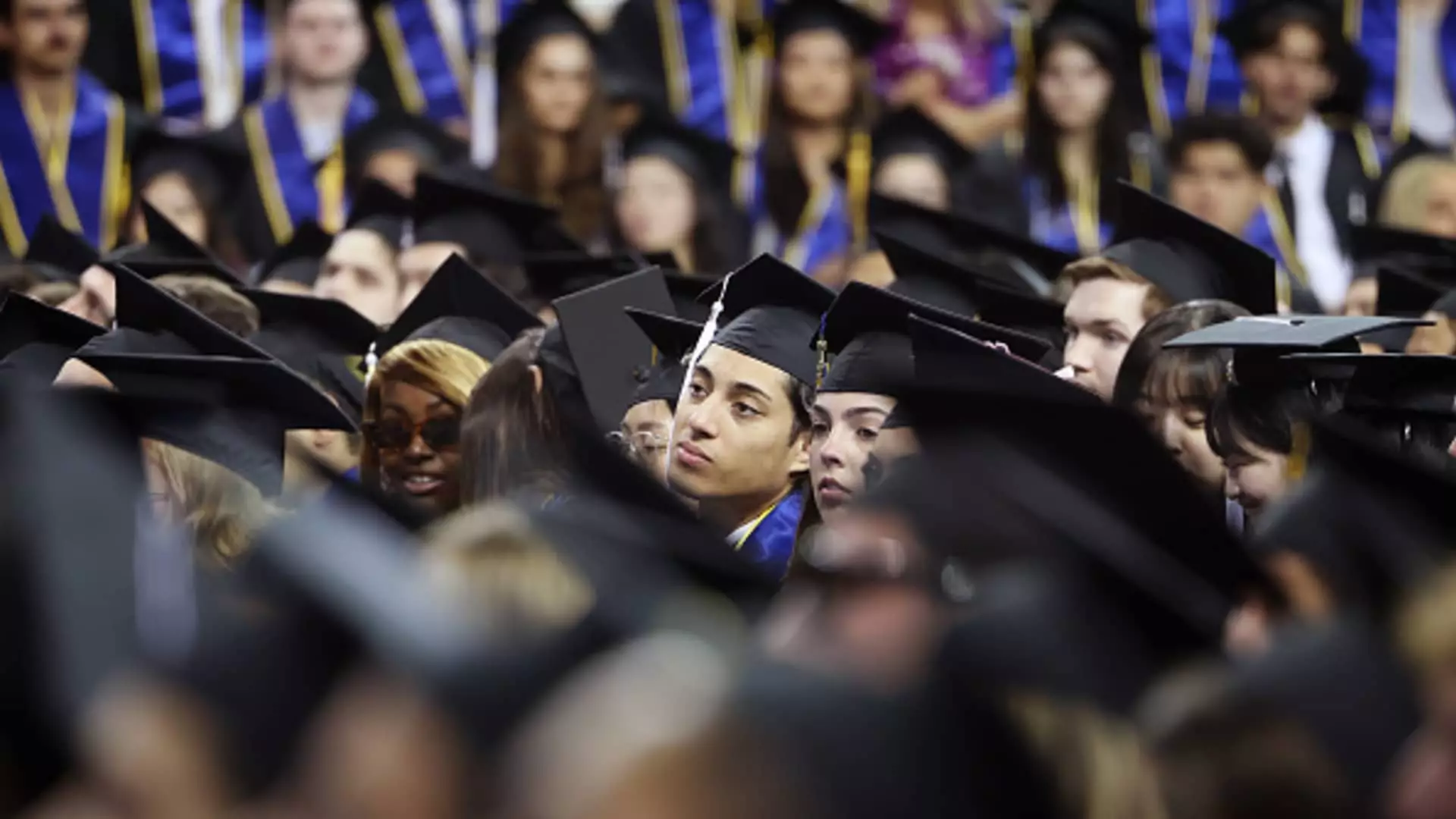The narrative surrounding a college education as a guaranteed pathway to financial success has been unraveling in recent years. A study from the Federal Reserve Bank of New York brings to light a significant contradiction: while college can yield high economic returns for certain graduates, a substantial percentage of students find themselves in precarious financial situations. In this new landscape of rising tuition fees and increasing student debt, the traditional wisdom that a college degree is an unquestionably good investment is being challenged. The data suggests that for about 25% of college graduates, the economic payoff of a degree might not be worth the investment, thus planting seeds of doubt in an entire generation.
The study highlights the disparities in outcomes based on several factors such as major, the duration taken to graduate, and the overall debt incurred. Notably, majors that offer specialized training in technical fields like engineering, mathematics, and computer sciences seem to yield higher returns. Consequently, students pursuing degrees in these areas often have a clearer financial trajectory ahead of them. Yet, as students are encouraged to pursue passions rather than prioritize job market viability, the consequences of those decisions may lead to underemployment or crippling debt.
Rising Costs and Financial Burdens Amplifying Student Debt
The soaring costs of higher education are a constant refrain in discussions about financial aid. For decades, tuition rates have outpaced inflation, not to mention household expenses, making it increasingly challenging for families to shoulder these costs. With households now contributing 48% of college expenses—which is a noticeable increase from a decade ago—many students are being forced into a corner, relying heavily on student loans.
The implications of this trend are profoundly troubling. With over 40 million Americans currently burdened by student loan debt, which totals over $1.6 trillion, the psychological and financial pressures are palpable. Individuals are not only investing their futures into an institution that may or may not yield favorable results but are also likely to enter the job market with a significant financial albatross around their necks. This paradigm raises severe questions about the sustainability of the current higher education model.
Shifts in Student Perspectives: A Crisis of Confidence
As college costs escalate, so too do the doubts surrounding the worth of a four-year degree. Increasingly, high school graduates are reevaluating the returns on such an investment. The sentiment among today’s youth reflects a pronounced skepticism toward traditional education paths. The decline in both bachelor’s and associate degrees over the past few years is evidence of a paradigm shift, with students now favoring shorter, more cost-effective credentialing programs that promise quicker access to employment.
This trend can be attributed to a driven pragmatism among students who are acutely aware of the economic implications tied to a degree. Programs offering certificates and credentials have surged in popularity. So often, vocational training is portrayed as inferior to a university education, but this conventional narrative is gradually losing ground as more students prioritize immediate job opportunities over delayed financial benefits.
The Risk of Education Inequities
The alarming rate at which college tuition is rising raises significant concerns about equity in education access. It’s not just the students with technical aspirations who are affected; middle- and lower-income families may find themselves priced out entirely. Current attempts at streamlining the financial aid process, such as the simplified FAFSA, appear insufficient in addressing the rising tide of costs and, as a result, students are left in a state of limbo—caught between the ideal of college education and the harsh realities of funding it.
The reality is that the higher education system, as it stands, is fraught with inequalities that disproportionately affect those without the means to absorb these costs. As systemic challenges burgeon, schools may inadvertently reinforce class distinctions, where a college degree ceases to be a universal stepping stone and begins to resemble a financial luxury.
The dynamics of today’s educational environment demand critical reassessment. If the primary goal of higher education is to equip students for prosperous futures, society must urgently address the obstacles inherent in the current system that may barricade access rather than broaden it. These detrimental trends highlight a need for innovative reforms and a reevaluation of what it truly means to secure a worthwhile education in today’s economy.

